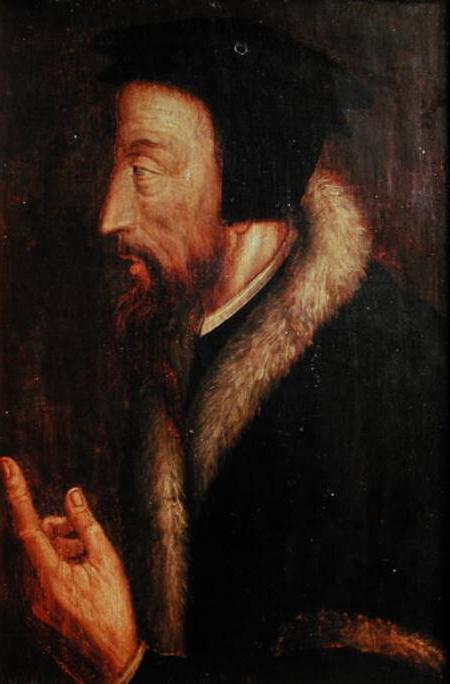Istituzione della religione cristiana
Giovanni Calvino frasi celebri
Istituzione della religione cristiana
Origine: Da Commento ai Salmi (1557); citato in Gianfranco Ravasi, L'incontro: ritrovarsi nella preghiera, Oscar Mondadori, Milano, 2014, p. 67. ISBN 978-88-04-63591-8
Giovanni Calvino: Frasi in inglese
Prefatory Address, McNeill (ed.), Institutes, p. 17; as quoted in ibid, p.222
Page 35.
Golden Booklet of the True Christian Life (1551)
Page 85.
Golden Booklet of the True Christian Life (1551)
Book 3, Chapter 3, Section 1, p. 497
Institutes of the Christian Religion (1536; 1559)
Page 37.
Golden Booklet of the True Christian Life (1551)
Page 53.
Golden Booklet of the True Christian Life (1551)
Re John 13:31 (Torrance 1959 edition).
St John
Page 19.
Golden Booklet of the True Christian Life (1551)
Commentaries on the Prophet Zechariah. Part 9 http://www.iclnet.org/pub/resources/text/ipb-e/epl-09/cvzec-09.txt.
Zecharia
Prefatory Address, p. 18
Institutes of the Christian Religion (1536; 1559)
Book 3, Chapter 2, Section 27, p. 480
Institutes of the Christian Religion (1536; 1559)
Rom 12:1; Eph 4:23; Gal 2:20
Page 27.
Golden Booklet of the True Christian Life (1551)
“God promised by the mouth of Isaiah that queens should be the nursing mothers of the church.”
Referring to (Isaiah 49:23) http://bible.crosswalk.com/OnlineStudyBible/bible.cgi?section=1&word=nursing%20AND%20QUEENS&version=kjv in a letter to William Cecil (May 1559), in Bonnet (1980), op. cit., p. 212; also in Hastings Robinson, ed., The Zurich letters: Comprising the Correspondence of several English Bishops and others with some of the Helvetian reformers, during the early part of the reign of Queen Elizabeth http://books.google.com/books?vid=OCLC02160004&id=CP4QAAAAIAAJ&pg=RA2-PR17&lpg=RA2-PR17&dq=%22zurich+letters%22#PPP16,M1, (Second Series. A.D. 1558-1602), Cambridge (England): University Press, 1845, p. 35.
New Testament Commentaries, John 1.32; as quoted in Thomas F. Torrance, "A Harmony of Matthew, Mark and Luke” https://books.google.com/books/about/A_harmony_of_the_Gospels_Matthew_Mark_an.html?id=0diPvgAACAAJ (St. Andrew's Press, Edinburgh, 1972), p.32. and "The Gospel of St. John: The Story of the Son of God" https://books.google.com/books?isbn=113704120X
St John
Variante: And at this day, the blessedness brought to us by Christ cannot be the subject of our praise, without reminding us, at the same time, of the distinguished honor which God was pleased to bestow on Mary, in making her the mother of his Only Begotten Son.
Page 40.
Golden Booklet of the True Christian Life (1551)
Prefatory Address, p. 23
Institutes of the Christian Religion (1536; 1559)
Deut 32:15
Page 55.
Golden Booklet of the True Christian Life (1551)
Book II Chapter 8. Spurgeon.org. Retrieved 2015-02-25.
Institutes of the Christian Religion (1536; 1559)
“The supreme and only Judge of the universe stands before the tribunal of an earthly judge.”
Re Matthew 27:24 (Torrance 1972 edition).
Harmony of Matthew, Mark, Luke
Page 33.
Golden Booklet of the True Christian Life (1551)
Calvin to the Foreigners’ Church in London, 1552-10-27, in George Cornelius Gorham, Gleanings of a few scattered ears, during the period of Reformation in England and of the times immediately succeeding : A.D. 1533 to A.D. 1588 http://books.google.com/books?vid=0bbTMcT6wXFWRHGP&id=esICAAAAQAAJ&printsec=titlepage&dq=%22george+cornelius+gorham%22 (London: Bell and Daldy, 1857), p. 285.
Prefatory Address, p. 24
Institutes of the Christian Religion (1536; 1559)
Book 3, Chapter 2, Section 24, p. 477
Institutes of the Christian Religion (1536; 1559)
Psalm 9:10
Book 3, Chapter 2, Section 31, p. 482
Institutes of the Christian Religion (1536; 1559)
Book 1, Chapter 1, p. 44
Institutes of the Christian Religion (1536; 1559)
Matt. 25:41
“Calvin: Institutes of the Christian Religion” https://books.google.com/books?isbn=1611644453 Book 1, ch.14, sect. 14, edited by John T. McNeill pp.173-174.
Institutes of the Christian Religion (1536; 1559)
Origine: A Treatise of Relics (1543), pp. 100-101
Page 84.
Golden Booklet of the True Christian Life (1551)
Page 42.
Golden Booklet of the True Christian Life (1551)
